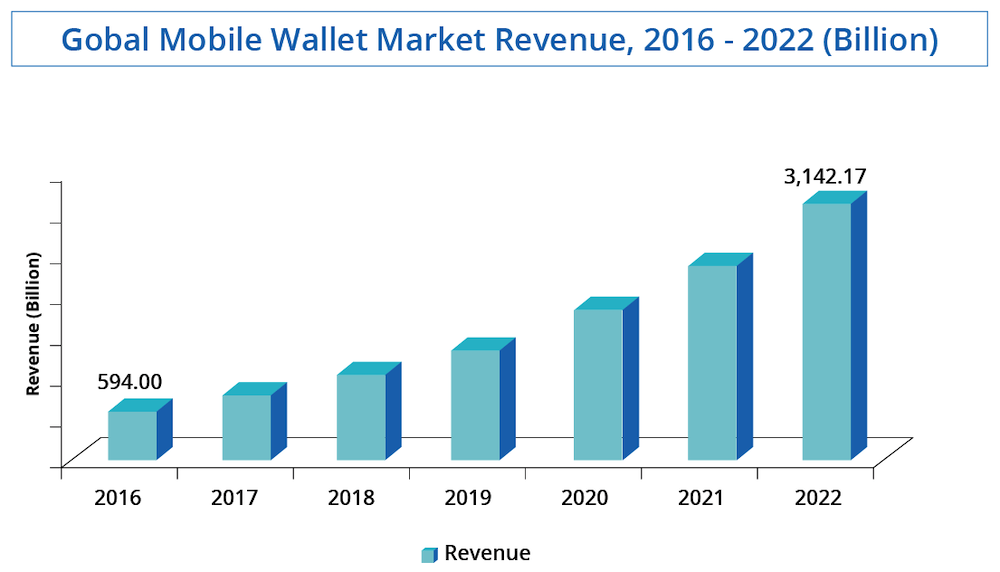Money in the bank
For decades now, card payment firms have grown rich on convenience. Weekly grocery shop? New TV? How about that designer shirt? Simply hand over your card.
At the heart of that convenience is a hidden cost. A 3 percent surcharge — to process credit card payments, merchants must pay interchange fees, assessment fees, and processing fees — straight to the cards’ issuing bank, the cards’ payment network, and the payment processor. These fees cut into merchants’ profits.
But what if there was a different way?
Enterprise digital wallets are emerging as a cheaper, no-fuss, tech-enabled alternative. Retailers from Amazon, Walmart to Kroger have all introduced their own enterprise wallets for direct customer payments as they look to cut out the payment card intermediaries.
Some merchants are so convinced by the benefits of enterprise digital wallets that they’ve gone further. Take UK online clothes retailer ASOS, which has recently entered the US with a wallet that entices customers with flexible payment terms.
These wallets are part of a wider shake up in the fast-moving payment market, where new entrants like Apple Pay and Samsung Pay have joined the likes of PayPal in offering alternatives to traditional card providers.
Typically, there are three types of wallets that most merchants consider:
- Closed wallets are specific to individual merchants, for instance, Starbucks
- Semi-closed wallets such as PayPal, Apple Pay, Google Pay give consumers more choice, but the merchants don’t own the wallet
- Open wallets are typically provided by banks in the form of credit or debit cards, such as those from Venmo and Paytm.
For the purposes of this article, we’re considering the closed wallet ecosystem. That’s because these closed enterprise digital wallets offer both customers and companies unique benefits. It’s not just about different ways to pay, it’s about bolstering relationships with your customers — and dramatically improving your cash position.
These enterprise digital wallets can be thought of almost like virtual gift cards. Customers can load funds into their wallets to spend in-store or online — and without a card company’s fees, the merchant can add a little top up as an incentive. And it need not just be about retailers — we’ve seen many industries, such as healthcare look at wallets. This is a fast-growing space: The global wallet market was valued at approximately $594 billion in 2016 and is expected to reach approximately $3,142 billion by 2022, according to Zion Research. That is one fast-growing market.


So why are companies so keen to become their own payment processor?
There are many answers, but to understand this trend fully it helps to look at some broader trends that are reshaping retail.
Why hold customer funds in your enterprise digital wallet?
The emergence of e-commerce has been the single most impactful event in over decades of retailing. Online shopping has disrupted our malls, retail corner stores and high streets. Across the globe, it has reshaped customers’ expectations and forced retailers to answer the fundamental question of what value they bring to their customers. E-commerce has put pressure on pricing, supply chains and relationships. Those that haven’t addressed the new reality have either already gone out of business or stand on the precipice.
Against that backdrop, enterprise digital wallets provide some massively appealing benefits.
If you can persuade customers to put money into your enterprise digital wallet, you already know they’ll want to spend that money with you.
What’s more, by owning the payment part of the process, you have more control and capabilities to add, if wanted, to your supply chain systems. For example, you’ll have fewer accounts receivable issues since you already have the payment escrowed and that gives you better visibility into the execution status of the fulfilment process — thereby boosting customer loyalty. And as an added bonus, if you have customers loading up their wallets, your business gains a significant cash boost — even relatively modest top-ups can accrue huge interest for you when looking at a large customer base.
The rise of enterprise digital wallets ties in closely with increased emphasis on customer loyalty. Loyalty program investment is expected to grow significantly and reach USD 6.95 billion by 2023, according to Allied Market Research. Deep integration between a wallet and a loyalty program allows you to analyze consumer spend, preferences, and to be able to market highly customized and personalized offers customers can appreciate. Strong customer insights can offset the relative expense of acquiring new customers.
So what’s in it for the customer? The most obvious benefit is a straightforward price or rebate incentive. If a customer uses an enterprise digital wallet, there’s no payment card fee, and the savings can be passed on — in whole or in part — to the customer as a discount or a cash back, encouraging more patronage and loyalty.
Then there’s the convenience aspect: typically, a wallet will enable the customer to manage their accounts; authorize purchases; fund and debit their wallets; validate their identity either in-store or online; and to manage their loyalty programs and access incentives. Tying your wallet into your loyalty scheme gives you the option to offer non-cash incentives, such as multi-buy discounts, that consumers value. Wallets can also be used as a lay-away store, accumulating funds for the eventual non-credit purchase of an item.
Where to start with your digital wallet?
Often, when a business is looking to add some new functionality to its systems or deliver a new customer-facing service, it can be tempting to look at packaged software offerings. But when it comes to enterprise digital wallets, there are good reasons to keep this entirely in house.
One of the critical considerations for any merchant, when it comes to payments, is security. Payment fraud is a blight on the retail industry, with nearly eight in 10 merchants reporting they’ve been affected by it in 2019. Closed wallets can’t solve this entirely, but because they build a strong relationship between customer and merchant, it makes it easier to detect suspicious transactions.
Of course, not all security issues are about fraudulent transactions. Any payment system is likely to attract the attention of cybercrooks. And again, there’s a huge advantage for digital wallets: a study carried out for JPMorgan Chase concluded that because digital wallets typically store and transfer sensitive payment data using data center secured, server-based encryption and tokenization, they’re typically safer than using a physical card, which can be stolen or duplicated easily.
Implementing a digital wallet may be non-trivial, particularly for organizations that currently use an external payments provider. Payment data must be handled according to PCI (Payment Card Industry) standards and stored in environments, whether on premise or in the cloud, that also meet those standards. Your team needs to buy and customize or build a modern digital wallet system, integrate and test, and scale and operate it within your lines of business. This integration can save expenses though, since your existing credit card fraud and recovery teams now might have fewer cases, and can handle the expected responsibility for wallet oversight.
At one delivery service we worked with, the attraction of an enterprise digital wallet was simple: by owning the payment part of the value chain, the delivery service hoped to be able to improve the customer experience. This company deals with one million transactions every day. And, it has multiple lines of business which provides the challenges of higher friction during payment.
With the enterprise digital wallet, teams delivered primary value through users having a single, easy-to-use payment capability and auxiliary value through reduced stress concerning cancellation or refunds. Future value is increased through an increase in customer affinity for new products and services.
Their wallet system needed to be integrated with 11 upstream systems. It also needs to interface with banks and know-your-customer information providers, as well as the food delivery system. Given that complexity, it made little sense to look at off-the-shelf wallet options, which would have been expensive and future upgrades would likely be tortuous. In only the first three months after go-live, 150,000 customers had signed up for a wallet.
For one healthcare network, the decision to build its own wallet came from necessity: there was no ready-built solution for this sector. It was looking at financial inclusion in healthcare, primarily focusing on those without health insurance, who often struggle to access healthcare. The system enables people to save, send, receive and pay money for medical treatment through a mobile health wallet on their phone — where funds can only be spent on healthcare at selected healthcare providers. It’s a vital solution in making healthcare more accessible in poor communities.
For your enterprise wallet to work for you, it has to be right for your circumstances: whether it’s an opportunity to own the payment and returns process, a desire for better customer information or a need to deal with regulations. But while there isn’t a one-size-fits-all version of the enterprise wallet, the pay-off is clear: you can forge stronger customer relationships, while opening up a potentially lucrative avenue for generating cash. It’s not hard to appreciate the allure.















